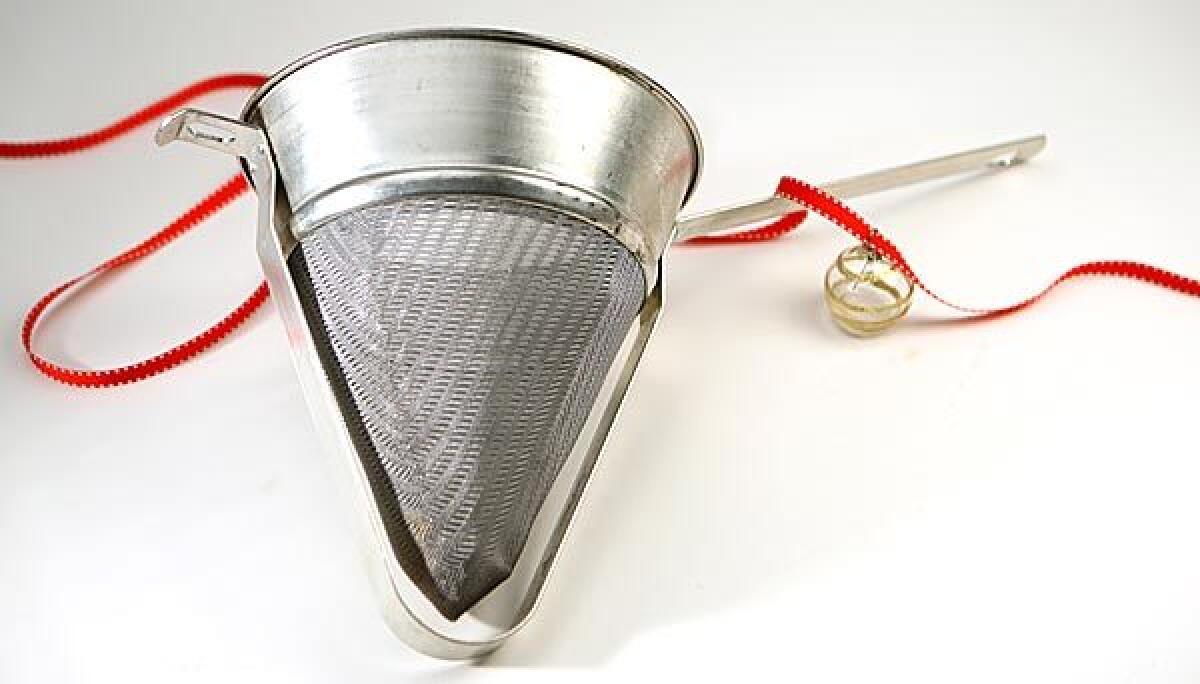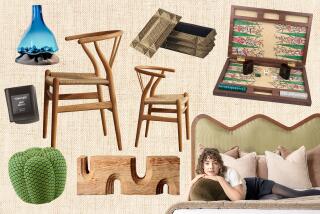Suggestions for the cook on your Christmas list

One thing about having a hobby like cooking is that people tend to think they know just what to get you for Christmas. Of course, unless theyâre cooks themselves, theyâre almost always wrong.
Pots and pans? Almost invariably the wrong size or the wrong material. Gadgets? Take it from me: Iâve got two kitchen drawers full of them, most of which I use only once or twice a year. A good chefâs knife? They might as well try to arrange a marriage.
Partly this is because cooking is so personal. The food I cook and the tools necessary to prepare it may not be at all similar to what you cook and need.
Needs change too. Things a beginning cook will lust after are not the same as what will interest a more experienced cook. Thereâs a learning curve to cooking and as you progress along it, your wants become more specific.
So, if youâve got a cook on your holiday gift list, here are a few suggestions appropriate to their experience level. And if youâre a cook yourself, maybe this is something you want to mark up a little and leave someplace where it can be easily found. Itâll save both of you a lot of trouble -- not to mention drawer space.
Beginners
* Instant-read thermometer: If thereâs one single tool that will immediately make you a better cook, this is it. Judging the doneness of meat by sight and touch is fine, but even experts have trouble with it (witness countless fails on âTop Chefâ). This $10 to $15 gadget eliminates the guesswork.
* A good sautĂŠ pan: This is the most important pan a cook can have. And itâs one of the priciest -- good heavy pans with sturdily attached handles will run more than $100. But if youâre looking for a splurgey gift, this is the best place to sink a wad of dough. Itâll be used on an almost nightly basis, and a good one will last a lifetime.
* Sturdy strainer: Yeah, I know, not the sexiest tool in the drawer, but one of the most useful. Whether itâs for straining stocks or sauces, draining pasta or rice or rinsing salad greens, youâll use a good strainer almost every time you step in the kitchen. More good news: You can find perfectly acceptable ones at stocking stuffer prices -- less than $10.
* Microplane grater/zester: This is the definitive example of the better mousetrap. When Leonard Lee, who runs a very good woodworking catalog and also appreciates fine kitchen equipment, found his wife struggling with a grater, he handed her a Microplane rasp. The rest is history. There is nothing that makes faster work of everything from zesting lemons to grating hard cheese into feathery strands. Pretty good for about $15.
* Pasta pot with steamer: One of my favorite kitchen quotes is from the French cookbook writer Pomiane, who advised cooks that the first thing they should do when stepping into the kitchen is start a big pot of water boiling. âWhatâs it for? I donât know, but itâs bound to be good for something.â This is that pot, and you can use it for cooking pasta, making stock, blanching and steaming vegetables . . . the list is practically endless. And the best thing is, you donât need to buy an expensive one: Because heat transfer isnât critical, a $40 metal one will work as well as one made from hammered copper.
Intermediate
* Mortar and pestle: One of the first things Iâd advise cooks to do as they progress in their skill level is to use their hands more, rather than relying on machines. Thatâs not just culinary Luddite-ism. You learn a lot more by doing things yourself, rather than simply flipping a switch. OK, so maybe whipping cream by hand isnât necessary (though I confess I still do it), but try using one of those $30 Thai granite mortar and pestles for grinding spices and making coarse purĂŠes like pesto and youâll appreciate the difference.
* Roasting pan with rack: This should be the second expensive pan you buy. In the first place, roasting is one of the glories of home cooking (how often do you find a good roast at a restaurant?). And in this case, the quality of the pan does make a difference. To get good drippings without scorching, the pan has to be heavy and well-made (do NOT fall for nonstick, which defeats the purpose). Itâs a $150 to $200 item, but again, it will last as long as you cook.
* Cast-iron Dutch oven: This will be your weekend comfort pot: stews, beans, casseroles, all of those long-simmered dishes that make cooking fun. And while itâs really nice to have the expensive enameled French versions, you can get perfectly workable plain models at the hardware store for around $50. Start with something in the 5- to 6-quart range, knowing that youâll add a bigger one eventually.
* Linked instant-read thermometer: OK, maybe this is a bit of an extravagance. But the luxury of being able to leave the probe in place and then be able to know exactly what temperature the meat is from anywhere in the kitchen is a real gift, particularly at less than $40. If you want, itâll even beep at you when the meat is done.
* Heavy gratin dish: Not enough people make gratins for dinner parties. Fix that, will you? Think about it: vegetables baked with cream and cheese. What could be better? And either enameled cast iron or heavy porcelain will cost only about $50.
Advanced
* Digital scale: Volume measurements are so erratic that in some cases theyâre next to useless. So why donât American cooks measure by weight, the way Europeans (and professionals) do? Because they donât have scales. Why donât they have scales? It surely canât be the price: You can get a perfectly acceptable digital scale for less than $30 and a professional model for less than $70. Câmon, itâs time to join the party.
* Silicone baking sheet: If you like to bake, youâve probably been frustrated by sticky doughs and delicate pastries that somehow always manage to weld themselves to the pan at just the most fragile spots. Silicone sheets do for baking what nonstick skillets do for sautĂŠing, for less than $20.
* Chinois: Think youâre ready to go all Thomas Keller in the kitchen? And not Ad Hoc or Bouchon, but French Laundry? Then youâre going to need one of these fine-mesh metal strainers. Theyâre pricey -- a good one can cost more than $100 -- but nothing gives gloss to a sauce like passing it through one of these to remove any impurities. In fact, Keller sometimes does it 20 times for one sauce. Well, he has someone else do it, but giving that would get really expensive.
* Food mill: Food processors and blenders are miraculously convenient things, but they work so fast that they can be hard to control -- and they inevitably pump a lot of air into whatever theyâre purĂŠeing. A food mill runs about $50, and works slowly, so you can control the texture of what youâre purĂŠeing. Use the fine disc, and itâll even remove seeds and skins from cooked tomatoes.
* Pastry bag: Theyâre not just for decorating cakes -- use a pastry bag with a plain tip for piping everything from cream puff dough to gnocchi Parisienne. And, of course, thereâs nothing wrong with making things pretty, particularly when a good bag and a full set of tips cost less than $30.
More to Read
Eat your way across L.A.
Get our weekly Tasting Notes newsletter for reviews, news and more.
You may occasionally receive promotional content from the Los Angeles Times.











